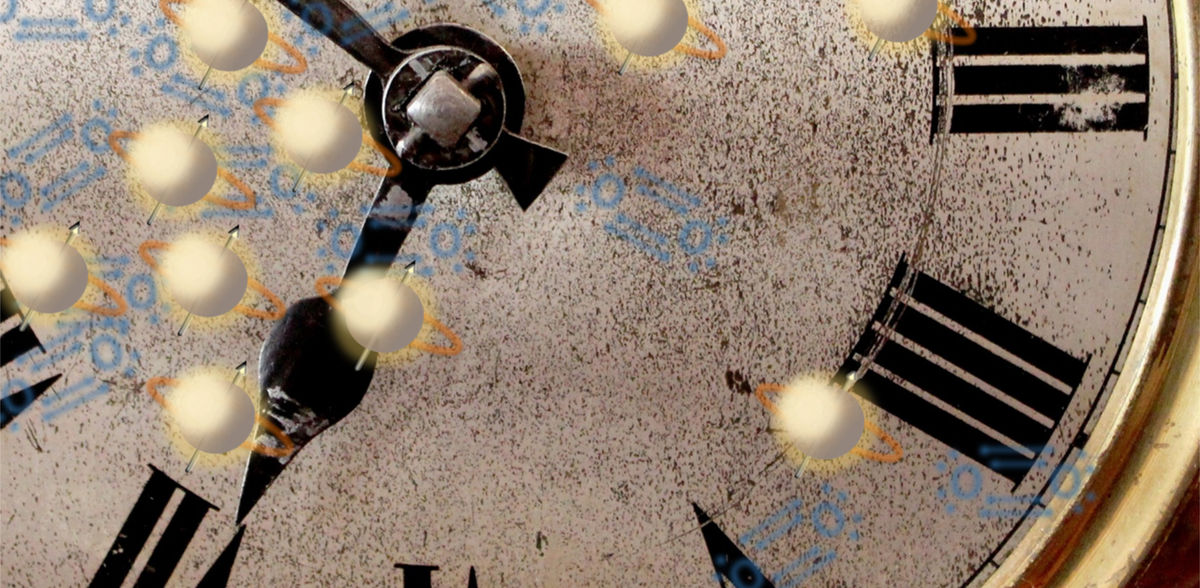A switch for the internal clock
New approaches for quantum biology and medicine
Researchers at the University of Innsbruck investigated the effect of nuclear magnetic resonance on the internal clock of cells at different times of the day. To their surprise, the clock could be switched on and off depending on whether the treatment was carried out during the day or at night. The observed magnetic field effects are based on quantum biological processes.
In a new study, a team led by Margit Egg from the Institute of Zoology at the University of Innsbruck irradiated cells from mice with therapeutic nuclear magnetic resonance (tNMR) in order to investigate the long-suspected effect of weak magnetic fields on the internal clock of mammalian cells. In a way, nuclear magnetic resonance therapy is a slimmed-down version of an MRI. It combines a weak magnetic field with a corresponding radio wave that causes hydrogen protons from irradiated cells and tissues to resonate. The energy transferred in the process is returned to the cells after the therapy. "Due to the significantly weaker magnetic field used in tNMR and the correspondingly lower radio frequency, the treatment is completely non-invasive and has already been used for two decades to treat osteoarthritis, osteoporosis and for wound healing," explains Margit Egg.
Previously published results from the research group have shown that magnetic resonance alters the entire metabolism of the cell. Among other things, the lactate metabolism is reduced, while cellular respiration stabilizes despite a lack of oxygen. In the new study, Margit Egg's team has now been able to show that the internal clock of cells can be both switched on and off at the same time. "This effect depends on the time of day at which the treatment is carried out, in the early hours of the day or in the first half of the night," explains the biologist. "Depending on this, the internal clock is switched on or off." The oxygen radical superoxide proved to be the interface between the physical magnetic field and the living cell. As the internal clock, like the oxygen signaling pathway, plays a central role in diseases such as heart attacks, strokes and cancer, these research findings expand the range of medical treatments.
New approaches for quantum biology and medicine
In further studies, the team intends to investigate whether the magnetic field, the radio waves or only the combination of the two in the form of tNMR is responsible for the observed effects. The results are also of interest to quantum biology, as they could provide new insights into the so-called radical pair mechanism. This mechanism has already been used to explain the ability of migratory birds to orient themselves according to the Earth's magnetic field. "Our latest studies now show that the radical pair mechanism not only forms the basis for the magnetic sense of migratory birds, but can also explain an ever-increasing number of emerging magnetic field effects in cells, which have enormous therapeutic potential. The control of the internal clock, which plays a role in numerous diseases, is one of them," explains Margit Egg.
Note: This article has been translated using a computer system without human intervention. LUMITOS offers these automatic translations to present a wider range of current news. Since this article has been translated with automatic translation, it is possible that it contains errors in vocabulary, syntax or grammar. The original article in German can be found here.
Original publication
Viktoria Thoeni, Elitsa Y. Dimova, Thomas Kietzmann, Robert J. Usselman, Margit Egg; "Therapeutic nuclear magnetic resonance and intermittent hypoxia trigger time dependent on/off effects in circadian clocks and confirm a central role of superoxide in cellular magnetic field effects"; Redox Biology, Volume 72
Most read news
Original publication
Viktoria Thoeni, Elitsa Y. Dimova, Thomas Kietzmann, Robert J. Usselman, Margit Egg; "Therapeutic nuclear magnetic resonance and intermittent hypoxia trigger time dependent on/off effects in circadian clocks and confirm a central role of superoxide in cellular magnetic field effects"; Redox Biology, Volume 72
Organizations
Other news from the department science

Get the life science industry in your inbox
By submitting this form you agree that LUMITOS AG will send you the newsletter(s) selected above by email. Your data will not be passed on to third parties. Your data will be stored and processed in accordance with our data protection regulations. LUMITOS may contact you by email for the purpose of advertising or market and opinion surveys. You can revoke your consent at any time without giving reasons to LUMITOS AG, Ernst-Augustin-Str. 2, 12489 Berlin, Germany or by e-mail at revoke@lumitos.com with effect for the future. In addition, each email contains a link to unsubscribe from the corresponding newsletter.





















































